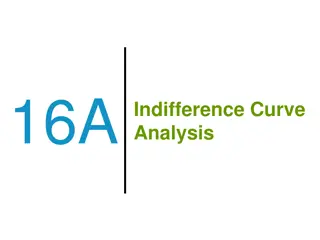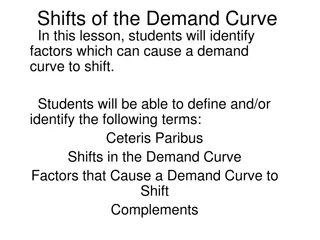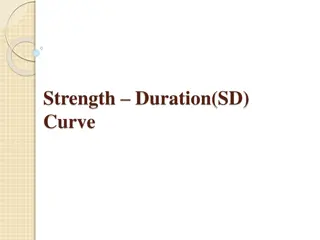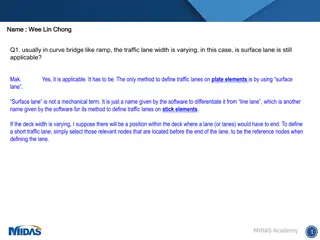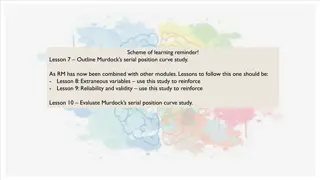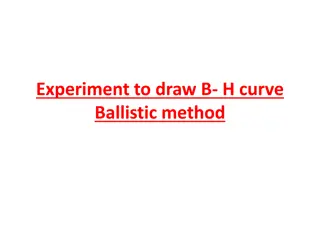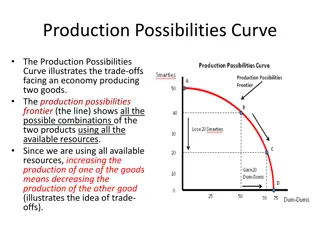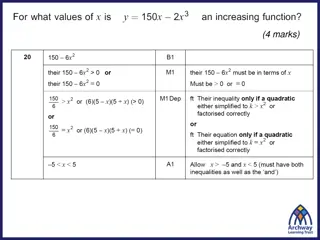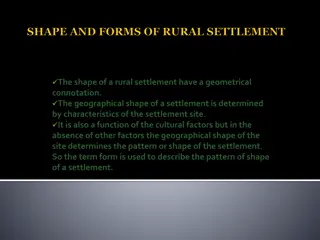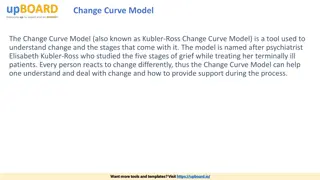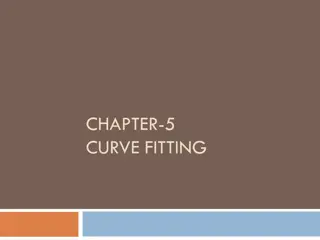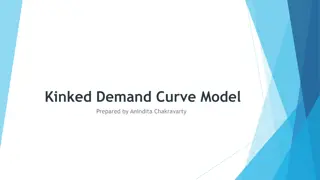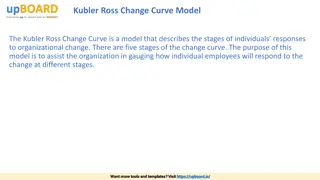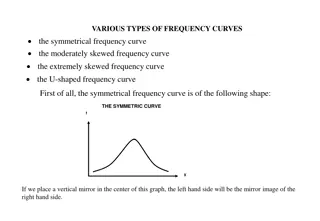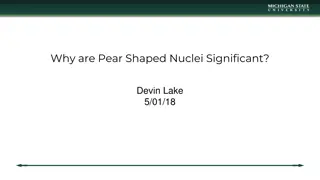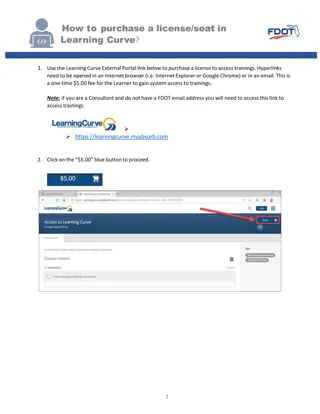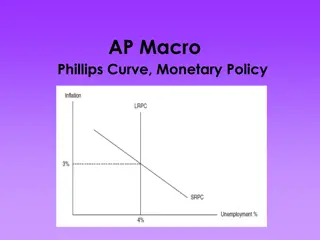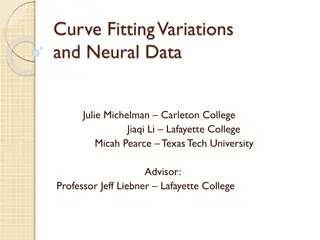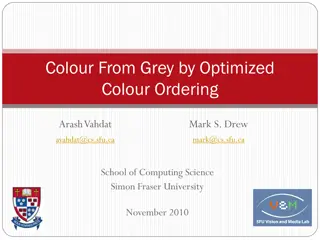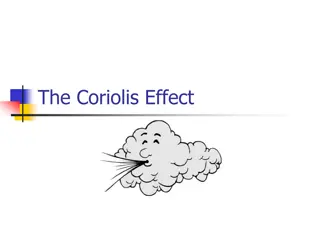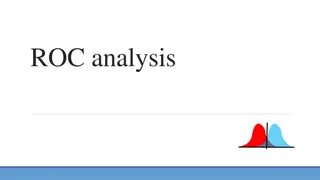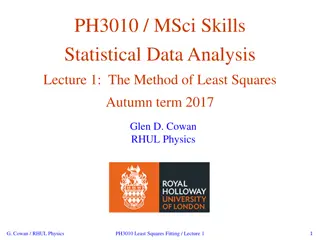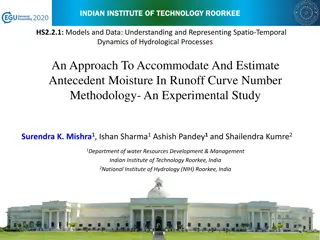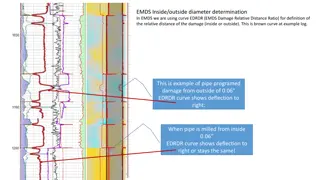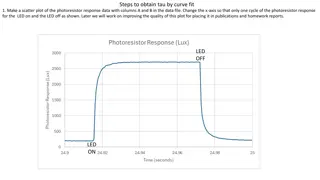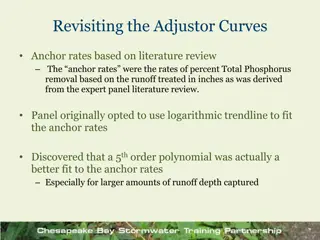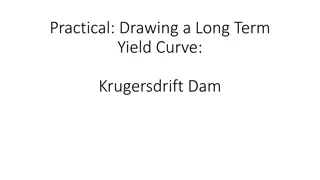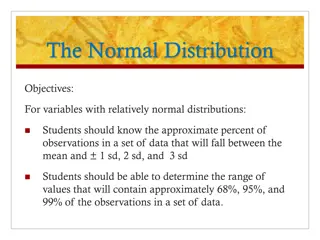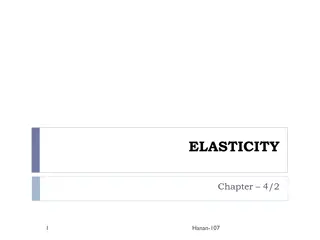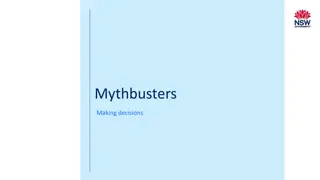Best Modular Kitchen Design Plans for You _ Regalo Kitchens.pdf
Modular kitchen design spaces provide beyond compare ease of use, productivity, and looks, making them the best option for modern households. Whether you live in a small apartment or a large house, these ideas balance performance and style. Explore the most popular kitchen plans, such as L-shaped, U
11 views • 4 slides
Understanding Indifference Curve Analysis in Economics
Indifference curve analysis in economics involves examining consumer preferences through the representation of various utility levels achieved from different combinations of goods. By combining indifference curves with budget constraints, optimal consumption bundles can be determined. The analysis i
0 views • 25 slides
Understanding Shifts in Demand Curve
This lesson explores factors that can cause a demand curve to shift, defining terms like Ceteris Paribus and identifying factors influencing demand. Shifts in the demand curve and examples of price influences are discussed, emphasizing the impact of factors beyond price on consumer behavior.
0 views • 16 slides
Understanding Strength-Duration (SD) Curve: A Neuromuscular Diagnostic Test
Strength-Duration (SD) curve is a diagnostic test assessing neuromuscular integrity by measuring the relationship between stimulus strength and duration. It helps in electro-diagnosis of peripheral nervous system disorders and evaluates nerve degeneration and regeneration. The curve is obtained by p
1 views • 17 slides
Understanding Traffic Lane Width Variation in Curve Bridge Design
In curve bridge design, traffic lane width may vary, requiring proper consideration of surface lanes for defining traffic lanes. Non-square elements, like triangular plates, may be used at deck ends due to geometric limitations. Different mesh local axes may be needed for square and non-square eleme
0 views • 15 slides
Learning Reminder: Murdock's Serial Position Curve Study and Experimental Practice
Explore the insights of Murdock's serial position curve study and its applications in experimental psychology. Dive into the concepts of alternate and null hypothesis, Sensory Register, and memory experiments. Engage in practical learning through experiment time activities and visual aids like patch
0 views • 76 slides
Experimental Method to Draw B-H Curve Using Ballistic Approach
Conducting an experiment to draw a B-H curve using the ballistic method involves a setup with primary and secondary windings, a ferromagnetic specimen, and various circuit components. By passing a current through the primary coil and measuring the induced emf in the secondary circuit, the relationsh
0 views • 16 slides
Understanding Production Possibilities Curve and Economic Growth
The Production Possibilities Curve illustrates trade-offs in an economy producing two goods, showing possible combinations using available resources. Efficiency on the curve means no way to make some better off without others worse off. Opportunity cost is the given-up production when increasing one
0 views • 5 slides
Understanding Points of Inflection in Calculus
Points of inflection in calculus refer to points where the curve changes from convex to concave or vice versa. These points are identified by observing changes in the curve's concavity, and they are not always stationary points. A stationary point can be a point of inflection, but not all points of
0 views • 14 slides
Geometrical Patterns in Rural Settlements: Shapes and Designs
The geographical shape of a rural settlement plays a significant role in determining its pattern. Various shapes such as rectangular, linear, star-shaped, T-shaped, and more are formed based on the site characteristics and cultural factors. Different settlement designs like compact or dispersed are
0 views • 8 slides
Understanding the Change Curve Model: A Tool for Managing Change
The Change Curve Model, developed by Elisabeth Kubler-Ross, helps individuals navigate the stages of change by addressing denial, anger, bargaining, depression, and acceptance. This model provides a framework to understand different reactions to change and offers strategies to support individuals th
0 views • 4 slides
Understanding Curve Fitting Techniques
Curve fitting involves approximating function values using regression and interpolation. Regression aims to find a curve that closely matches target function values, while interpolation approximates points on a function using nearby data. This chapter covers least squares regression for fitting a st
0 views • 48 slides
Understanding Monetary Policy Effectiveness in the IS-LM Framework
The relative effectiveness of monetary policy in influencing investment, employment, output, and income depends on the shape of the LM curve and the IS curve. A steeper LM curve signifies higher effectiveness as it indicates less interest elastic demand for money, resulting in significant changes in
0 views • 24 slides
Understanding the Kinked Demand Curve Model in Oligopoly
The kinked demand curve model in oligopoly, developed by Paul M. Sweezy, highlights stability in pricing and output decisions among firms. This model suggests that rival firms may react asymmetrically to price changes, leading to a kink at a certain price level. Assumptions include few firms produci
3 views • 7 slides
Functional Measurement Systems Analysis for Curve Data Using Random Effects Models
Measurement Systems Analysis (MSA) is crucial in determining the contribution of measurement variation to overall process variation. When dealing with curve data instead of single points, a Functional MSA approach using random effects models can be applied. This involves estimating mean curves, mode
0 views • 5 slides
Understanding Kubler Ross Change Curve Model for Organizational Change
The Kubler Ross Change Curve Model delineates five stages - Decision, Denial, Frustration, Depression, and Experiment - illustrating individual responses to organizational change. Recognizing these stages aids organizations in anticipating and managing employee reactions effectively. Each phase invo
0 views • 4 slides
Understanding the Normal Probability Curve
The Normal Probability Curve, also known as the normal distribution, is a fundamental concept in statistics. It is symmetric around the mean, with key characteristics such as equal numbers of cases above and below the mean, and the mean, median, and mode coinciding. The curve's height decreases grad
0 views • 10 slides
Understanding Various Types of Frequency Curves in Statistics
Explore different types of frequency curves such as symmetrical, moderately skewed, extremely skewed, and U-shaped curves. Symmetrical curves exhibit mirror images on either side, while skewed curves have longer tails on one side. Extreme skewness results in J-shaped or reverse J-shaped curves. The
0 views • 8 slides
Performance Study of Pear-shaped Diamonds and Price Index Formula
This presentation provides a detailed analysis of the performance attributes of pear-shaped diamonds, including positive and negative aspects, rarity, vulnerability to chipping, and more. It also introduces a price index formula for evaluating diamond polish based on various factors such as rarity,
0 views • 8 slides
Significance of Pear-Shaped Nuclei in Atomic Physics
Causes of deformation in atomic nuclei, leading to pear-shaped structures, are explored with examples such as 224Ra and 220Ra. Measurement of Barium isotopes using advanced techniques sheds light on the spatial asymmetry of nuclei. The significance of pear-shaped nuclei in explaining CP-symmetry bre
0 views • 7 slides
Step-by-Step Guide to Purchasing a License in Learning Curve
Follow this detailed step-by-step guide to easily purchase a license in Learning Curve. Access the external portal link, add the license to your cart, enter your account information, proceed to checkout, provide payment details, and await approval confirmation via email.
0 views • 6 slides
Understanding the Phillips Curve and Its Implications
The Phillips Curve, introduced by economist A.W. Phillips in 1958, initially showed an inverse relationship between unemployment rate (u%) and inflation rate (tt%). This led policymakers to consider a trade-off between reducing unemployment and increasing inflation. However, the concept faced challe
0 views • 22 slides
Exploring Curve Fitting and Regression Techniques in Neural Data Analysis
Delve into the world of curve fitting and regression analyses applied to neural data, including topics such as simple linear regression, polynomial regression, spline methods, and strategies for balancing fit and smoothness. Learn about variations in fitting models and the challenges of underfitting
0 views • 33 slides
Exploring Change Management Models: Classic Curve, Kotter’s 8-Step, Pritchett’s & More
Unveil the intricacies of various Change Management Models including the Classic Change Curve, Kotter’s 8-Step Approach, Pritchett’s Model, ACMP Standard, and Leavitt’s Diamond. Gain valuable insights into implementing successful organizational change strategies.
0 views • 104 slides
Optimized Colour Ordering for Grey to Colour Transformation
The research discusses the challenge of recovering a colour image from a grey-level image efficiently. It presents a solution involving parametric curve optimization in the encoder and decoder sides, minimizing errors and encapsulating colour data. The Parametric Curve maps grayscale values to colou
0 views • 19 slides
Understanding Global Wind Patterns and the Coriolis Effect
Air pressure differences cause winds, with the Coriolis Effect causing wind paths to curve as air moves from high to low pressure areas. In the Northern Hemisphere, winds curve to the right, and in the Southern Hemisphere, they curve to the left. Planetary and local winds are influenced by temperatu
0 views • 14 slides
Understanding ROC Analysis in Classification of Biological Samples
Differentially expressed genes can be utilized to categorize biological samples as responder or non-responder to treatments. Receiver Operating Characteristics (ROC) analysis is a method to evaluate classification performance based on sensitivity, specificity, true positive rate, and false positive
0 views • 8 slides
Statistical Data Analysis: The Method of Least Squares
This module on Statistical Data Analysis covers curve fitting using the method of least squares and an introduction to Machine Learning. Students will learn how to find fitted parameters, statistical errors, and conduct error propagation. The goal is to accurately fit a curve to measured data points
0 views • 36 slides
Nonlinear Curve Fitting Techniques in Engineering
Utilizing nonlinear curve fitting techniques is crucial in engineering to analyze data relationships that are not linear. This involves transforming nonlinear equations into linear form for regression analysis, as demonstrated in examples and methods such as polynomial interpolation and exponential
0 views • 18 slides
Understanding Spatio-Temporal Dynamics of Hydrological Processes at IIT Roorkee
This study conducted at the Indian Institute of Technology Roorkee focuses on modeling and understanding hydrological processes, particularly in estimating antecedent moisture in the Runoff Curve Number methodology. The research delves into the historical background of the Soil Conservation Service
0 views • 13 slides
Pipeline Diameter Determination Using EMDS Curve Analysis
EMDS (EMDS Damage Relative Distance Ratio) curve analysis is utilized for determining the inside/outside diameter of pipelines based on relative damage distance. Collar mass variations and sensor readings indicate damages, such as compromised casing collars and unreported casing patches behind tubin
0 views • 9 slides
Steps to Obtain Tau by Curve Fit
Learn how to analyze photoresistor response data and obtain the time constant (tau) by curve fitting. Follow steps to create scatter plots, calculate Lux values, model equations, errors, and more to improve the quality of your data analysis. Enhance your data visualization skills and optimize data f
0 views • 24 slides
Revisiting Adjustor Curves for Total Phosphorus Removal Rates
Based on a literature review, it was found that a 5th-order polynomial curve is a better fit than the originally used logarithmic trendline for anchor rates of percent Total Phosphorus removal related to runoff depth. The expert panel report reflects the old curves while trendline equations in FAQ d
0 views • 7 slides
Practical Guide to Drawing Long-Term Yield Curve at Krugersdrift Dam
Learn how to draw a long-term yield curve at Krugersdrift Dam step-by-step, including setting up the study, browsing for data, importing hydrology files, manipulating the curve for accuracy, and achieving the final result.
0 views • 7 slides
Understanding the Normal Distribution in Data Analysis
The normal distribution, also known as the bell-shaped or Gaussian distribution, is defined by the mean and standard deviation of quantitative data. It helps determine the range of values containing specific percentages of observations. Identifying frequency, probability, mean, and the relationship
0 views • 19 slides
Understanding Elasticity in Economics
Elasticity in economics refers to the responsiveness of demand to price changes. A more elastic curve results in larger quantity changes for small price changes, while a less elastic curve requires larger price changes to affect quantity consumed. The elasticity of demand can be measured by calculat
0 views • 13 slides
Faster Implementation of Modular Exponentiation in JavaScript
Development of a cryptographic authentication toolkit for web application developers. Discusses modular exponentiation, digital signatures, elliptic curve cryptography, and the importance of DSA in providing secure authentication. Aims to offer both classical and elliptic curve cryptographic solutio
0 views • 22 slides
Understanding Vertical Alignment in Railway Track Geometric Design by Dr. Walied A. Elsaigh
Explore the vertical alignment of railway tracks through Dr. Walied A. Elsaigh's insights on curve length formulas, types of crest and sag vertical curves, properties of typical vertical curves, and a detailed example with solutions for calculating elevations at various stations along the curve. Lea
0 views • 10 slides
Visual Analysis: Decisions, Batman's Graphs, COVID Tests, and Flattening the Curve
Explore a collection of images featuring Mythbusters, Batman's original and corrected graphs, alternative Batman heights and weights, COVID tests graph, and a depiction of flattening the curve. Each image provides insight into decision-making, data representation, and visual storytelling. Learn how
0 views • 7 slides
Understanding the Market Force of Demand
Demand is essential in economics, representing the quantity buyers are willing to purchase at different prices. The Law of Demand asserts that as prices rise, demand falls. Through demand schedules and curves, we analyze how factors like price, number of buyers, income, and related goods influence d
0 views • 13 slides

